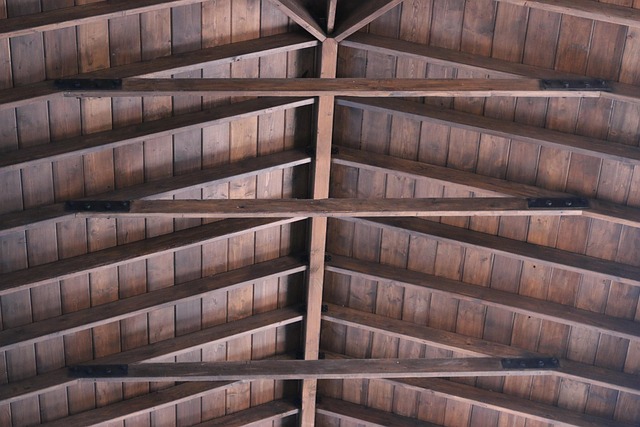Rooftop gardens, enabled by solar-integrated roof designs, transform urban spaces by boosting biodiversity, reducing energy consumption, and enhancing aesthetics. These sustainable ecosystems support local flora and fauna, harness renewable energy, and mimic natural environments. Design considerations include structural integrity, native plants, water conservation, and efficient irrigation. Regular maintenance ensures long-term viability through watering, mulching, pest control, and seasonal plant rotation, fostering a balanced ecosystem that benefits both nature and urban landscapes.
Rooftop gardens are transforming urban landscapes, offering a unique blend of biodiversity and aesthetic appeal. This article explores the multifaceted benefits of integrating green spaces into your home’s rooftop, from enhanced energy efficiency through solar-integrated roof designs to improved air quality and habitat creation for local wildlife. We’ll guide you through the process, from planning and design to plant selection and maintenance, helping you create a vibrant sanctuary above your head.
Understanding the Benefits of Rooftop Gardens
Rooftop gardens are more than just a pretty addition to a building’s exterior; they offer a plethora of benefits that contribute to both environmental sustainability and aesthetic appeal. One of the key advantages is their positive impact on biodiversity. By converting flat rooftops into lush green spaces, these gardens provide habitats for various species of birds, insects, and plants, fostering a thriving urban ecosystem. This natural habitat expansion is especially valuable in densely populated areas where green spaces are often limited.
Furthermore, rooftop gardens play a significant role in mitigating the urban heat island effect by offering natural cooling solutions. Solar-integrated roof designs, which incorporate elements like green mats or soil, can reduce the absorption of solar heat, thereby lowering the building’s temperature and energy consumption for cooling. This eco-friendly approach not only lessens the environmental impact but also contributes to a more sustainable and aesthetically pleasing urban environment.
Solar-Integrated Roof Designs: A Synergistic Approach
Roofs have traditionally been seen as mere structural elements, but with a shift towards sustainable living, they’re transforming into vibrant ecosystems. Solar-integrated roof designs offer an innovative solution that combines environmental benefits with aesthetic appeal. These designs incorporate solar panels seamlessly into the roofing structure, enhancing energy efficiency while creating green spaces that support biodiversity.
By integrating solar panels, buildings can reduce their carbon footprint and contribute to a greener environment. The open space on roofs, once dedicated solely to structural support, is now utilized for planting various flora. This not only adds beauty but also provides habitats for birds, insects, and other small creatures, fostering a diverse urban ecosystem. Solar-integrated roof designs represent a synergistic approach where technology and nature merge, contributing to both the functional and aesthetic aspects of modern architecture.
Planning and Design Considerations for Rooftop Gardens
Creating a rooftop garden involves careful planning and design considerations to ensure both biodiversity and aesthetic appeal. The first step is to evaluate the existing roof structure, considering its load-bearing capacity, water drainage systems, and overall stability. This is crucial for integrating new elements like solar panels or green infrastructure without compromising structural integrity. Solar-integrated roof designs are gaining popularity due to their dual functionality—providing renewable energy and creating a sustainable urban landscape.
Once the structural viability is established, designers can focus on landscaping. This includes selecting suitable plants native to the region, considering climate and sunlight exposure, and arranging them in layers to mimic natural ecosystems. A thoughtful design should also account for water conservation strategies, such as incorporating rainwater harvesting systems or using drought-resistant flora. The choice of materials is equally important; utilizing permeable surfaces and organic compost reduces water runoff and supports local biodiversity.
Plant Selection and Gardening Techniques
When designing a rooftop garden, selecting plants that thrive in elevated conditions and complement your region’s climate is key. Native flora is an excellent choice as it provides habitat for local wildlife and requires less maintenance. Consider drought-resistant varieties to reduce water usage, especially in solar-integrated roof designs where weight and heat absorption must be factored in. Perennials, annuals, and succulents offer diverse textures and colors throughout the seasons, ensuring your garden remains visually appealing year-round.
Gardening techniques for rooftop spaces have evolved to accommodate unique challenges. Container gardening is popular, allowing for easy plant placement, removal, and maintenance. Elevated beds or green walls can create more usable space while supporting a wider range of plants. Efficient irrigation systems, such as drip or micro-sprinkler setups, ensure water conservation. Regular weeding and monitoring for pests are essential to maintain a healthy garden ecosystem.
Maintenance and Sustainability of Your Rooftop Garden
Rooftop gardens, with their blend of biodiversity and aesthetic allure, require dedicated maintenance for optimal sustainability. Regular watering is crucial, especially during dry spells, though incorporating rainwater harvesting systems in your solar-integrated roof designs can alleviate this burden. Mulching helps retain soil moisture, suppress weeds, and regulate temperature, while seasonal plant rotation prevents pest buildup and fosters robust growth.
Surveillance for pests and diseases is paramount. Organic solutions like beneficial insects and natural fungicides offer safer alternatives to chemical treatments. Furthermore, fostering a balanced ecosystem by attracting birds, butterflies, and pollinators ensures your rooftop garden remains vibrant and thriving, contributing to both environmental health and visual allure.
Rooftop gardens are not just a beautiful addition to any structure; they also play a vital role in enhancing biodiversity and promoting sustainability. By integrating solar panels into these green spaces, we can create synergistic environments that benefit both nature and our energy needs. Through careful planning, strategic plant selection, and sustainable maintenance practices, anyone can transform their rooftop into a thriving oasis. Embrace the trend of solar-integrated roof designs and unlock the aesthetic and ecological advantages they offer.
